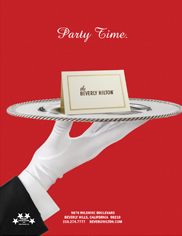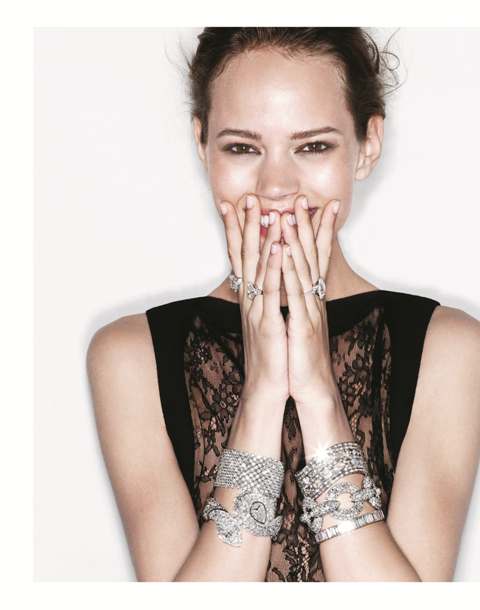
Archived // Cover Story
There�s More To �MR. BLACKWELL� Than Meets The Eye
In a rare interview, Mimi Makabi tries to discover who the man behind the trademark label �MR. BLACKWELL� really is.
By: Mimi Makabi
By: Mimi Makabi
Raised in the grinding poverty of a broken home, he was beaten by teenage gangs as he grew up struggling to survive in the mean streets of Brooklyn. He recalls, “I really had nothing. ‘We ’(mom, brother and himself) had an apartment for a week, kept getting thrown out, and sent to boy’s homes. It was just rough. Nobody had it good.” He continues, “Today they are so blessed, they don’t even know what god gave them. I don’t think people look at their life and realize what they have. They look… but they don’t see anything.”
With his minuscule amount of grade school education, his life-long climb out of poverty began at age fourteen when he was cast as Tommy in a 1936 summer stock tour of "Dead End" on Broadway. Downers in his young life prepared him to play one of the tough kids. Mr. Blackwell remembers, “I loved acting and I didn’t even know why. The character I played wasn’t far from home and it wasn’t really acting. It was being who I really was.” The role was the first of many both on stage and in the movies. Life at home began to change once he moved to Hollywood. He said, “I began to have money and we had a place to live. We had love and we needed each other. I felt they needed me. That was the best thing in my life. I felt I had a place finally...a home in their hearts.”
Throughout his early entertainment career, he found himself at auditions for roles that never materialized & in bit parts that often wound up on the cutting room floor rather than on the screen. Mr. Blackwell chose to return to the stage and appeared for almost a year on Broadway with Mae West in “Catherine Was Great”. He was convinced that by renaming himself as “Dick Ellis”, he would be able to erase the years of abuse and suffrage as Richard Selzer. However, that didn’t last long. After auditioning and being signed by Howard Hughes in 1946 for “Vendetta”, he was given a new name once again-one that Hughes felt was theatrical, polished and memorable. This was not only a new name, but a new role that he was destined to play in his life. It was the birth of “Richard Blackwell”, a new man with a whole new personality.
Disenchanted with his non-career onscreen, his diverse professional career continued and included a stint as a singer on an ocean liner and an attempt at a career as a personal manager for nightclub entertainers. After receiving remarkable reviews for the elegantly flowing gowns he had designed for one of his night club singers- Mr. Blackwell realized he was onto something. This marked the end of his career as a manager and the beginning of a successful future as a women’s high fashion designer.
In 1958, he not only discovered his untapped gift for women’s fashion, but also reinvented himself once again as the legendary “Mr. Blackwell.” With Robert Spencer (his life-partner of many years) by his side, this new self-creation became one of the longest-running and most successful roles in Mr. Blackwell’s varied career. With his potent mix of controversy, creativity, and technical mastery, he became an undisputed icon of style and one of the leading fashion designers of his time. He dressed some of the world’s most beautiful women and leading actresses which included Jane Russell, Dorothy Lamour, and Jayne Mansfield. Mr. Blackwell changed the world of fashion with his own language of style, one that was understated and elegant, timeless and luxurious. His gowns which highly emphasized on quality construction and classic simplicity were priced from $100-$800, or even more.
Mr. Blackwell’s trendsetting designs not only changed the look of high fashion but also the lives of the women who wore them. His belief was, “The designer should be sub servant to the woman- not the woman to the designer. And his only objective should be to make her look and feel eternally beautiful and fulfilled. Not lay on her some ridiculous fashion which is destructive of femininity, which they do today. They destroy the woman. It’s a shame.”
PAST ISSUES // Cover Stories
©2011 CELEBRITY SOCIETY
9606 SANTA MONICA BOULEVARD | THIRD FLOOR | BEVERLY HILLS, CALIFORNIA 90210
CONTACT@CELEBRITYSOCIETY.COM | 310.859.6654
9606 SANTA MONICA BOULEVARD | THIRD FLOOR | BEVERLY HILLS, CALIFORNIA 90210
CONTACT@CELEBRITYSOCIETY.COM | 310.859.6654




























